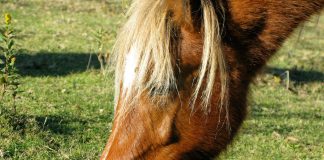Allergies 101
Horses experience allergies that are generated by the same mechanisms as those in humans. An allergic reaction occurs when your horse’s immune system overreacts to something it determines is foreign to the body. When this happens, certain cells in the body produce excessive amounts of chemicals, such as histamine and prostaglandins.
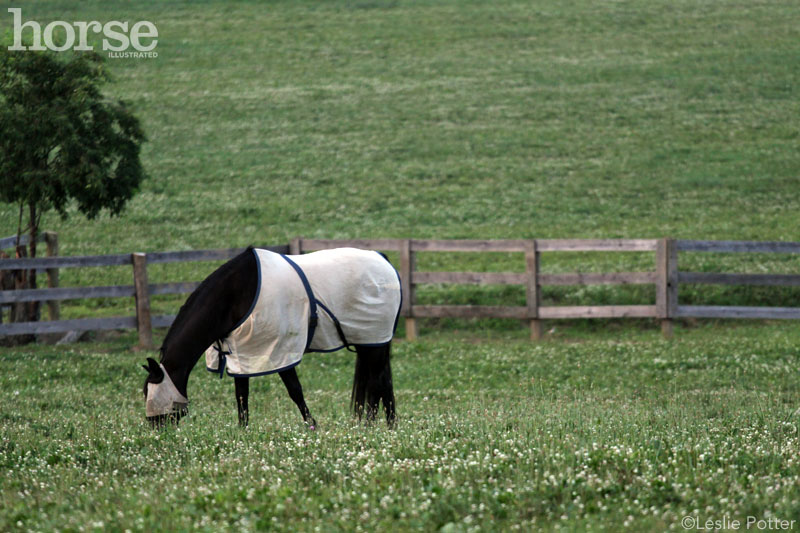
There are four main categories of allergic disorders in the horse: insect hypersensitivity, allergic inhalant dermatitis, food hypersensitivity, and contact allergies.
Insect Allergies
Insect hypersensitivity is at the top of the list of equine allergies due to your horse’s almost daily exposure to things with wings that bite, chew and sting. The saliva of the insect is the primary allergen that causes these unwanted reactions.
Flies are the first culprits that come to mind: horseflies, black flies, deer flies, and stable flies, to name the usual suspects. But mosquitoes, mites, and those pesky midges (also known as “no-see-ums,” or by their scientific genus name, Culicoides) can result in a miserable horse. Midges are so irritating they even have a name all their own for the condition they cause: summer itch, or sweet itch.
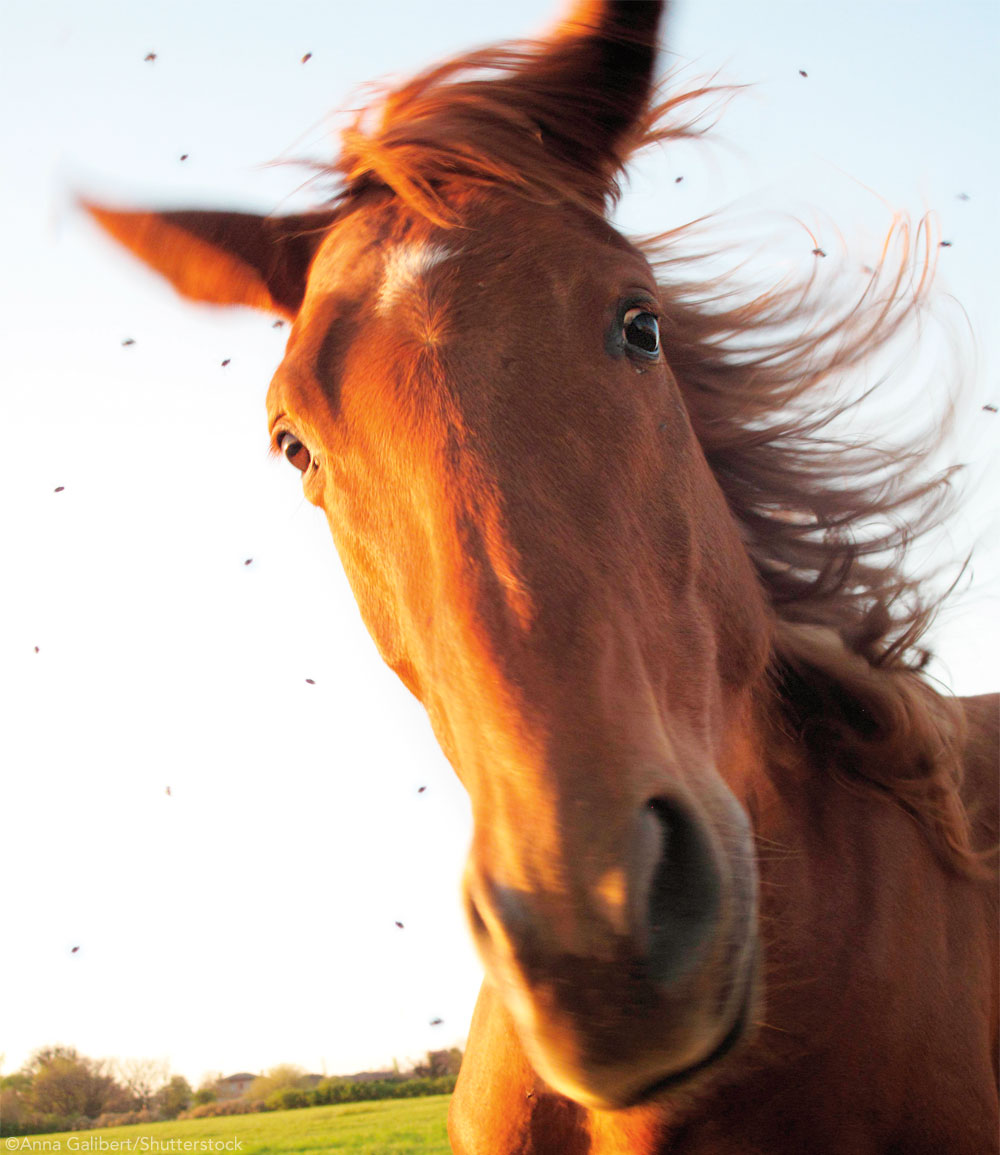
The affected location on your horse’s skin can help clue you in to which insect is the cause. Midges most frequently result in patches of edema, hair loss, and scabby skin along the mane and top of the tail and along the topline.
Fly bites, particularly from horseflies, may not be as condensed in one location, but rather spread out to wherever the insects can steal a meal. Black flies like to feed around your horse’s ears, along his belly, and in between his hind legs.
Hay Fever
Allergic inhalant dermatitis in horses is caused by environmental allergens such as mold, pollen, and dust. Ironically, your horse can indeed suffer from hay fever! When these allergens are inhaled, they cause the activation of certain antibodies in your horse’s immune system, resulting in the release of inflammatory chemicals into the skin and respiratory tract. This means that horses that suffer from this form of allergy can have dermatologic issues, respiratory issues, or both.
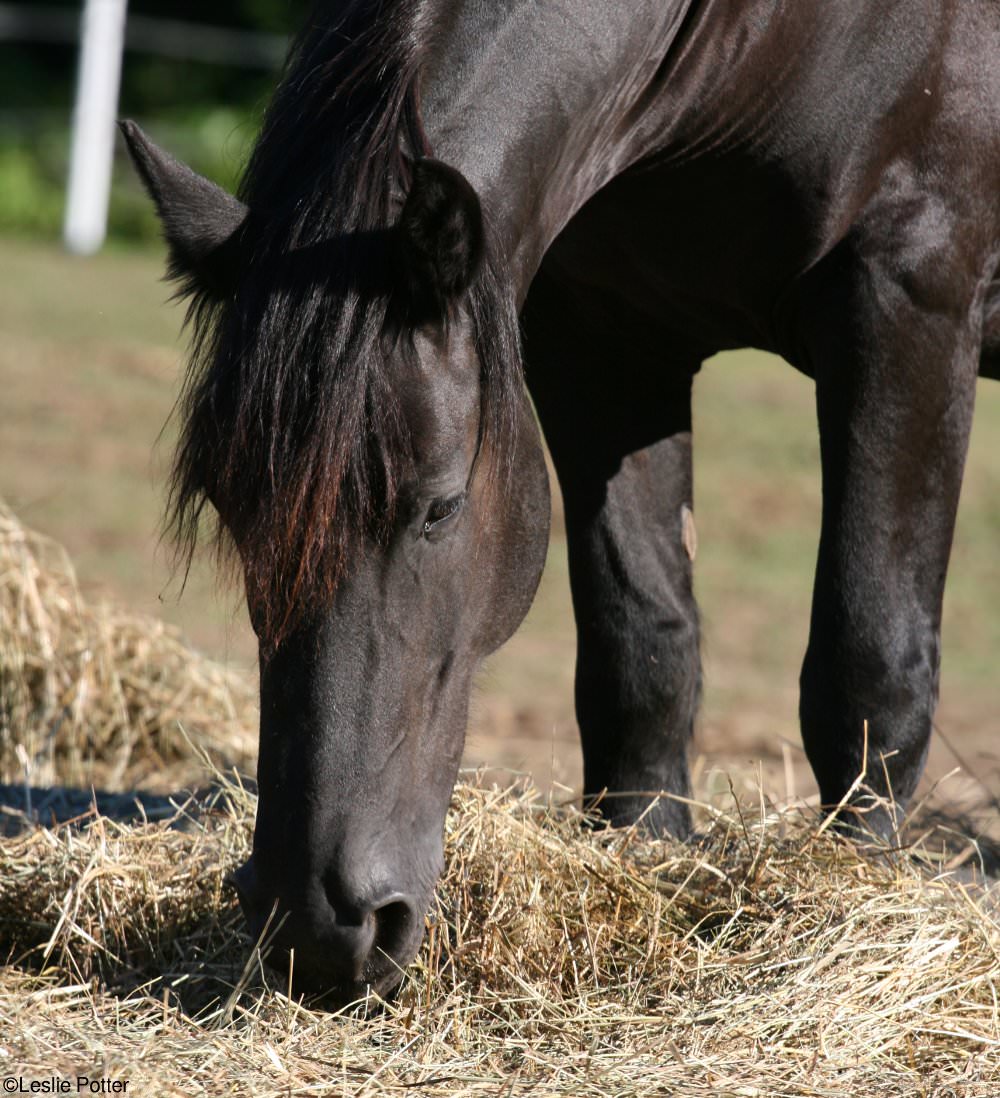
Although the skin lesions with inhalant dermatitis can appear similar to those that result from insect bites, the respiratory symptoms are more pronounced. The most well-known of the respiratory conditions linked to inhalant allergies is recurrent airway obstruction (RAO), also known as heaves. Horses with heaves can have clinical signs that range from a seasonal runny nose and a mild, dry cough during exertion to severe airway constriction that results in the disease’s namesake: heaving for air, even while standing still.
Inhalant allergies can also result in runny eyes and general malaise, which can be mistaken for a viral or bacterial infection. The key difference between allergy and infection is the lack of fever in the former. Additionally, runny eyes or nasal discharge with allergies is usually clear, not yellow or green. Seasonal head shaking has also been linked with inhalant allergies.
Food Allergies
The wide variety of grains and supplements we now have available at feed stores makes this type of allergy a real possibility that should be considered with any itchy horse. Itchy skin has been associated with wheat, oats, barley, bran and alfalfa, as well as various dietary supplements.
Contact Allergies
Contact allergies are the final catch-all category to lump other possibilities that could cause your horse to swell or itch or lose his hair. A contact allergy is the result of long-term or intermittent exposure to an allergen. Some materials that tend to illicit reactions in sensitive horses include rubber bits, neoprene items, wool blankets, or other topical agents that contain lanolin, the oil in sheep’s wool. Even a particular type of bedding or a certain medication may trigger an allergy in a horse.
Medication and Vaccine Allergies
An immediate allergic reaction to a medicine or vaccine, known as anaphylaxis, is a completely different type of allergic reaction than those mentioned previously. It is fast and life-threatening.
These reactions involve full-body release of large amounts of inflammatory chemicals that affect everything from breathing to heart rate and need to be treated immediately. Intramuscular injections, such as those given to administer a vaccine, are normally the cause. Thankfully, such reactions are extremely rare and they are no excuse to not properly vaccinate your horse.
Diagnosis
Patches of bald skin, scabs, and hives are reliable indicators that your horse is experiencing some sort of allergy. The challenge is determining the cause. Sometimes, it’s obvious—maybe you started using a new shampoo and now your horse is rubbing his tail. Other times, it’s not that simple. If your horse has hives all over his body in July, is this because of an insect, the cooling sheet he wears, or maybe something in his grain?
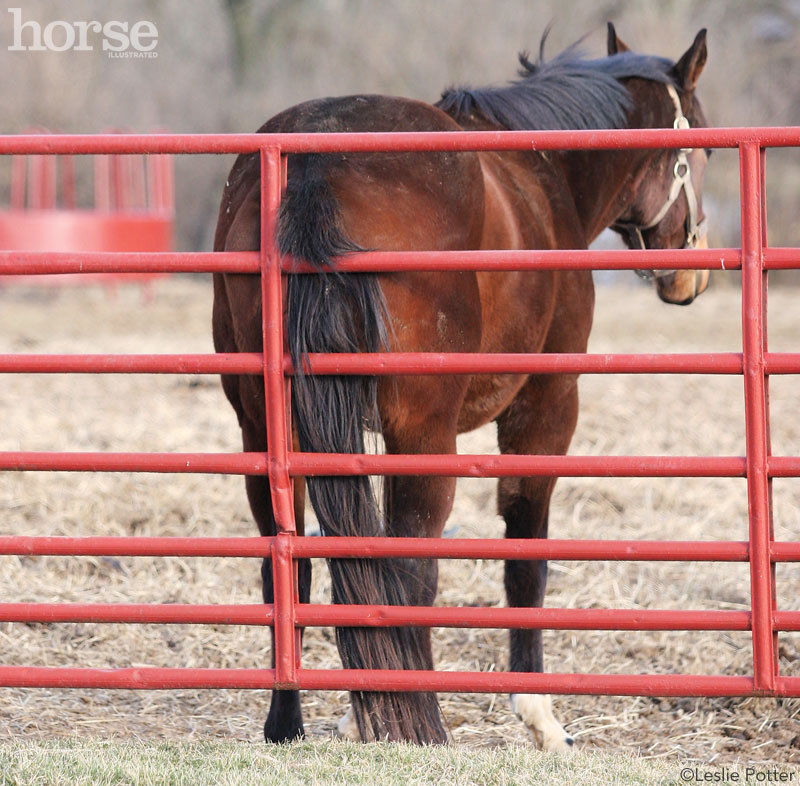
The good news is that many equine allergies are treated and managed in similar ways. Even if the exact cause isn’t identified, relief is still at hand. However, there are intra-dermal skin tests available for horses to try to identify specific allergens. Serum allergy tests are blood tests that can also help identify the culprit.
Sweet Relief
Treatment and management of allergies in horses is mostly a two-pronged attack. Removing the allergen itself is the first goal. For horses with insect hypersensitivity, this means barn-wide insect control: using fly sheets when out on pasture; installing fans in the barn to increase air flow and discourage insect congregation; proper manure management; getting rid of standing water, a breeding ground for many biting insects; and regularly applying copious amounts of bug repellent.
For food allergies, horse owners must use a bit of detective work. Food trials are used to identify what feed additive is causing the problem. This can sometimes be a time-consuming and laborious process as each individual feed ingredient is removed to see if clinical signs improve.

Contact allergies by their very definition require the offending agent to be removed. Often this simply means finding a new blanket or girth, or replacing a new tail conditioner with the old product you previously used. Ensuring that your tack is clean and doesn’t rub or irritate the skin are two methods to avoid certain contact allergies in the first place. Thoroughly grooming or bathing your horse prior to putting tack or blankets on are other easy ways to decrease the chances of your horse developing a contact allergy.
Managing Respiratory Allergies
For horses suffering from heaves, management options can be more complex. Since heaves is a condition caused by environmental allergens, it is all but impossible to remove the horse from the problem. For this very reason, heaves is a condition thought to be manageable but not curable. Decreasing the dust in the barn, soaking hay prior to feeding, feeding hay in a rack and not on the ground, and avoiding strenuous exercise during times of peak pollen count or dry, dusty conditions can help decrease your horse’s exposure to inhalant allergens.
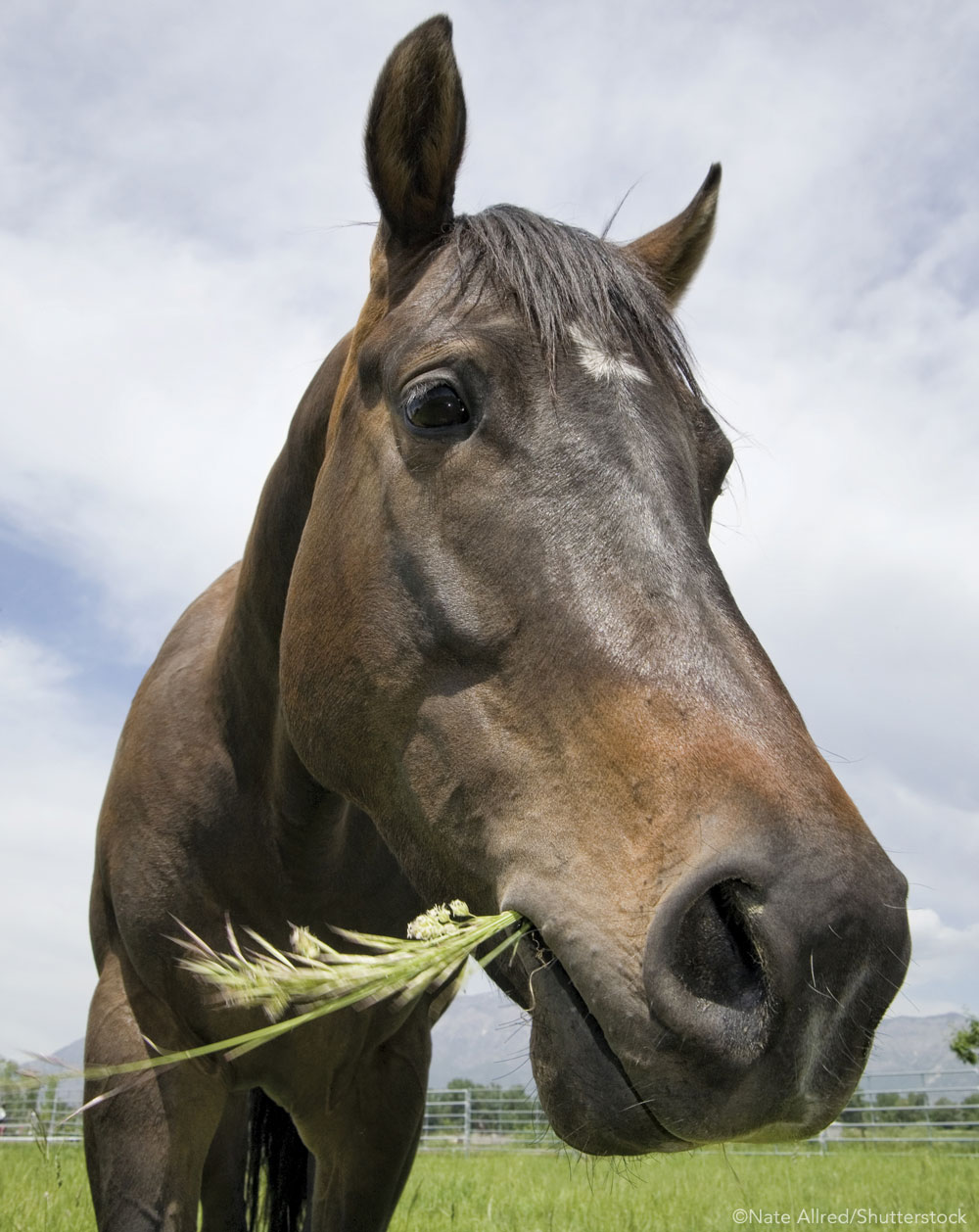
For seasonal flare-ups of heaves, medications are almost always required. Usually, antihistamines are not strong enough to fight the inflammation in the airways, and a course of oral steroids is prescribed. For severe cases, inhalant steroids and bronchodilators—either inhalant or oral—are used. Some horses require these medications year-round. Management of heaves is very dependent on the individual and the environment.
Medical Treatments
Treating the allergy with medication is the second goal. Since allergies are the result of an over-release of histamine and other inflammatory chemicals in your horse’s blood stream, medications such as antihistamines and anti-inflammatories like steroids work very well in negating the effects of the over-enthusiastic immune response.
For allergic dermatitis that results from insects, contact allergies, or food allergies, topical steroid cream can help soothe inflamed, itchy skin. Hypoallergenic shampoos, such as those containing oatmeal, can offer relief as well. Increasing the amount of omega-3 fatty acids in your horse’s diet may also help as an adjunct therapy, but talk with your veterinarian before switching feeds in a horse with allergies.
Whether a repeat seasonal offender or a one-off reaction, working with a horse suffering from allergies can be a challenge. However, with some detective work to discover the “who or what” and knowledge to understand the “why,” you, with the help of your veterinarian, can make your horse comfortable again.
This article originally appeared in the July 2015 issue of Horse Illustrated magazine. Click here to subscribe!





